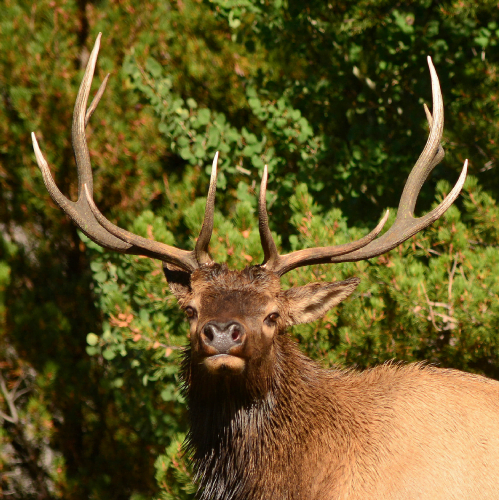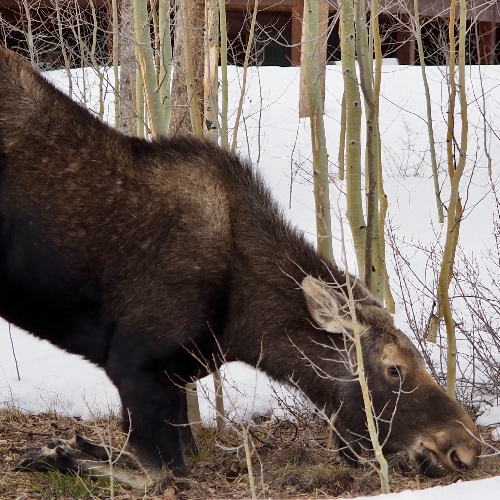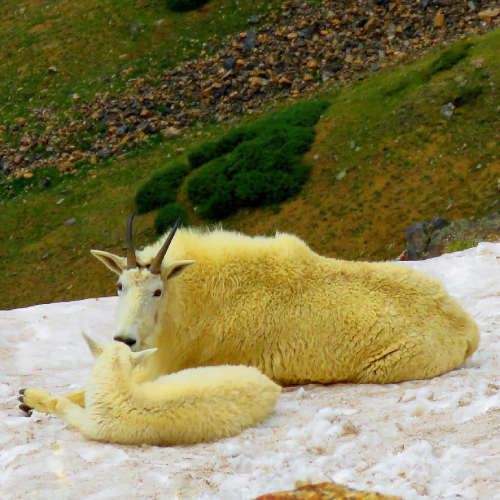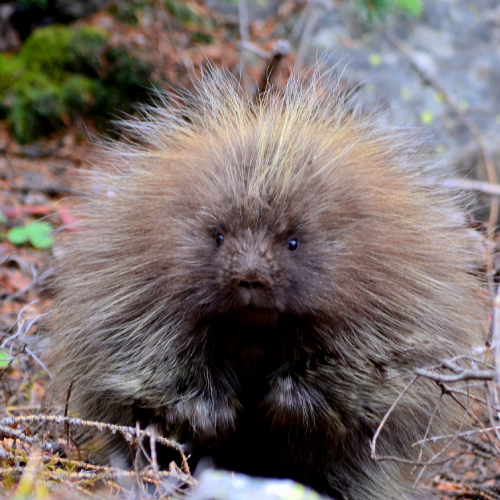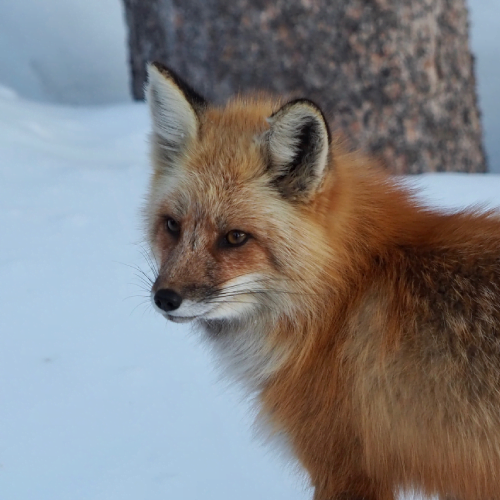Summit County Recreation Information
Your Donation to FDRD will make a difference!
WILDERNESS … OUR LEGACY FOR FUTURE GENERATIONS
Welcome to your National Forest! The White River National Forest is one of 154 National Forests found across the United States. The 2.3 million acre White River National Forest embodies the spirit of multiple use management with more than 13 million visitors per year, making it the number one forest for recreation visitors in the country. In addition to world-class recreation and abundant wildlife populations, the White River hosts activities such as grazing, logging, mining, and oil and gas development – all of which are crucial to the economies of Western Colorado and help to meet the mission of the Forest Service.
EAGLES NEST WILDERNESS AREA
This area was designated Wilderness in 1976 and has a total of 133,471 acres. The Gore Range begins north of Interstate 70 near Frisco and continues north toward Green Mtn. Reservoir. Heavy snow accumulates on the heights of the mountains of the Gore Range, providing a major contribution to the waters of the Colorado River. This is an area more vertical than horizontal, with sheer rock faces, steep ridges, deep valleys, jagged peaks, and dense forests in the lower elevations. Approximately 180 miles of trail provide access to this area, many of them dead-ending at a spectacular lake.
PTARMIGAN PEAK WILDERNESS AREA
This area was designated Wilderness in 1993 and has a total of 12,760 acres. The Williams Fork Mountains leap up and away into Ptarmigan Peak Wilderness from just below the western entrance to the Eisenhower Tunnel on Interstate 70. A typical lodgepole-pine forest rises to Engelmann spruce and subalpine fir and then on to alpine tundra at the highest elevations. From the boundary along the top of the mountain ridgeline, the terrain drops into the wet, lush, and lovely drainages of the South and Middle Forks of the Williams Fork Rivers.
Special Regulations that Apply to these Local Wilderness Areas:
- Motor vehicles, motorized or mechanized equipment, and mountain bikes are prohibited.
- Group size is limited to 15 people.
- Dogs must be leashed at all times.
- Campfires are not allowed at the lakes, within 1/4 mile of streams or trails, or above treeline.
- Camps must be at least 100 ft from lakes, streams and trails Hay and straw are prohibited for livestock- use pelletized feed or rolled grain.
- Pack and saddle animals should not be hitched or tethered within 100 ft of lakes, streams or trails.
- Equipment, supplies, and personal property cannot be left longer than 72 hours.
What Is Wilderness? “A wilderness, in contrast with those areas where man and his own works dominate the landscape, is hereby recognized as an area where the earth and its community of life are untrammeled by man, where man himself is a visitor who does not remain.”
-Federal Wilderness Act of 1964
Wildlife Safety
By Elissa Slezak – Colorado Parks & Wildlife (CPW)
- Our favorite places to recreate are also home to deer, elk, moose, black bears, mountain lions, mountain goats, foxes, coyotes, porcupines, weasels & more.
- Wild animals are most active at dawn and dusk and night, and may be taking a nap somewhere near a favorite path during the day.
- Approaching any wild animal is not only dangerous and unethical, but can result in legal charges of harassment of wildlife.
- Mountain bikes, dirt bikes, and ATVs that illegally go off-trail, erode the landscape and damage vegetation that wild animals rely on for forage and shelter.
- Certain areas are closed to human activity during winter and spring to protect wildlife.
- Wildlife will flee when frightened by fast movement and noise, (hikers, bikers, snowmobiles, dogs) using up their critical energy reserves.
- Disturbance can lead to starvation, and in the springtime can also lead to abandonment and death of newborns.
- In the presence of a wild animal, even the most well-behaved dogs quickly revert to primitive instincts and will chase, bark, or attack.
- Domestic dogs lack the hunting skills of their ancestors, and often end up injuring wild animals.
- Dogs off leash can chase a mother animal away from their young, and the abandoned baby animal often dies.
- A dog off-leash is easy prey for wild predators like mountain lions or coyotes.
- Moose are the most dangerous animal in Colorado, and they are not afraid of humans.
- Although they are beautiful and can often seem clumsy and aloof, they are capable of reaching speed of 35 mph and can charge when they feel threatened.
- Moose react to dogs as they would to their natural predator, wolves.
- They will defend themselves and their young very aggressively, especially when barked at or chased.
- Here are some ways to avoid a dangerous confrontation with a moose
- NEVER approach or try to feed moose
- Give moose plenty of space if you see them.
- Mooses hang out in wetland areas, be aware of moose when hiking in wetlands.
- Moose are protective of their babies, so if you see a baby moose, leave the area immediately.
- Keep your dog on a leash.
- Leaving your trash, food, and waste behind is illegal and degrades wildlife habitat and water sources.
- Human food that is left unsecured can habituate wild animals, like foxes and black bears, to seek human food sources and ultimately lead to the animal’s death.
- Feeding or baiting wildlife is illegal!
- Black Bears are very food driven in the summer and fall in order to load up on calories for their winter hibernation; they will explore all possible food sources.
- Bears will search near homes, campsites, and communities. If they find food, they will come back for more.
- If you see a bear looking for food, bang pots and pans and yell and scream to associate loud, unwelcoming noises with this food source. This will keep the bear from returning.
- NEVER corner a bear, this could cause it to become aggressive.
- If you see a bear on the trail, make noise and make yourself look big by waiving your arms above your head. Back away from the bear while doing this off the downhill side of the trail.
- Learn more from Colorado Parks and Wildlife: https://cpw.state.co.us/learn/Pages/LivingwithWildlifeWildBears.aspx
Please remember to stay on the trail, leash your dog, keep your distance, and do not litter or feed. CPW encourages you to watch and enjoy YOUR wildlife, but do it responsibly, and from a distance!
Thanks to Ruth Carroll & Elaine Collins for the wildlife photos
Summer Recreation Information
BIKING & WALKING
The Summit County Recreational Pathway System (Recpath) is a 55 mile long network of paved pathways opened to non-motorized uses. It runs throughout Summit County and to Vail.
BOATING & SWIMMING
Boating is permitted on Dillon Reservoir. Boating and swimming are permitted at Green Mountain Reservoir.
CAMPING
Opportunities for camping on National Forest lands include: developed campgrounds (tent and RV), backcountry (backpacking), and vehicular (dispersed) camping. Different regulations apply for each, especially in Wilderness Areas.
FIRE RESTRICTIONS
At certain times, fire bans and/or restrictions may apply to the National Forest and Summit County. Check with local officials for more information.
FISHING
Permitted on most public waters in the county. Check with Colorado Parks and Wildlife for information. Fishing licenses are not sold at the Ranger District office but are available throughout the county and online.
HUNTING
Allowed on National Forest lands with certain restrictions and regulations. A valid Colorado hunting licens is required. Check with Colorado Parks and Wildlife for information.
MINING & GOLD PANNING
Summit County has many existing mining claims on National Forest and other lands. Before any mining or panning activities, contact Bureau of Land Management (www.blm.gov) to avoid claim violations and the Dillon Ranger District for specific details.
MOUNTAIN BIKING
Permitted on designated trails within the National Forest, but prohibited in all Wilderness Areas.
NATURAL HERITAGE
Removing any pre-historic, historic, or archeological resource, structure, site, artifact or property from the National Forest is prohibited.
Winter Recreation Information
SNOWSHOEING & WINTER HIKING
Almost all summer trails can be used for snowshoeing & cross-country skiing in the winter. Some of these routes are not marked in winter, so please use caution while route finding. Please avoid snowshoeing directly on top of ski trails; if possible, snowshoe next to the ski tracks.
SNOWMOBILING
CO residents and out of state visitors must register their snowmobile with CO Parks and Wildlife before operating on public land or trails in CO. Permits are available atcpw.state.co.us and the Dillon Ranger District store. They are $30.25 and valid Oct. 1st – Sep. 30th each year.
BACKCOUNTRY HUTS
A system of reservable lodging in backcountry locations in Summit and neighboring counties, provides a variety of huts, cabins, and backcountry shelters for public use. All are open November – May; some are open in the summer. More info:
AVALANCHE SAFETY
Always check the weather/avalanche forecast from the Colorado Avalanche Information Center before traveling into the backcountry and make sure that you have the knowledge and education to make informed decisions and proper gear.
Your Safety in the National Forest
Users of National Forest lands have a great responsibility for their own safety. Hazards in the forest include changing weather, snow, avalanches, landslides, caves, overlooks, falling trees or limbs, high or fast water, contaminated water, wild animals, becoming lost, overexertion or hypothermia, mining hazards involving excavations, tunnels and equipment, shafts, and decaying structures; changing road and trail conditions, and potential exposure to unreasonable acts of others. It is the user’s responsibility to be aware of hazards and to use proper safety procedures and equipment to minimize risks and hazards. Remember many areas of the National Forest do not have cell phone coverage.












